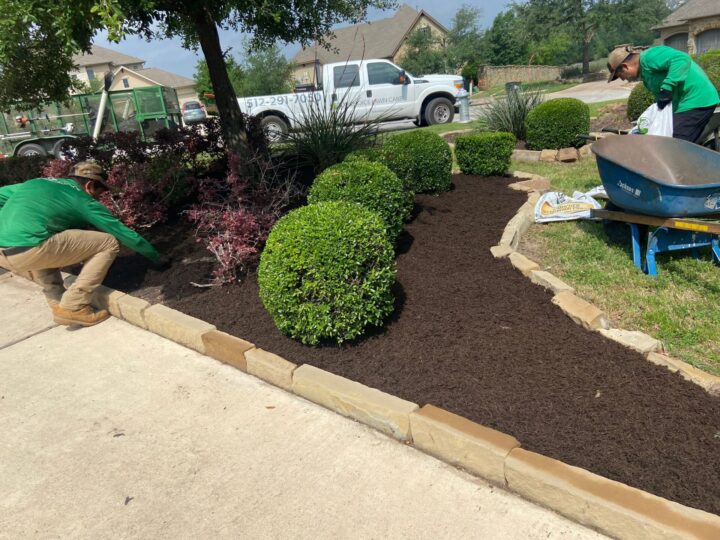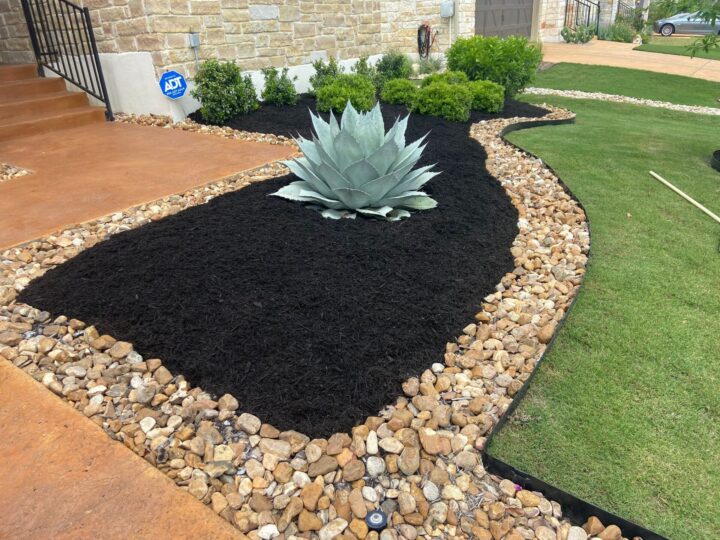Central Texas is a unique region with its own particular climate, and it’s important to choose plants that are adapted to this climate in order to create a successful landscape. One way to determine which plants will thrive in Central Texas is by understanding the USDA hardiness zones. This is not a fool-proof technique, but it is a useful starting point. You must also take into consideration soil make-up, water needs, sun requirements and other micro-climate factors.
What are USDA Hardiness Zones and why should I care?
- USDA hardiness zones are a system that divides the United States and Canada into 13 zones based on their average annual minimum temperature.
- The zones range from 1 (coldest) to 13 (warmest), with each zone separated by a difference of 10 degrees Fahrenheit.
- Central Texas/Austin falls under USDA hardiness zone 8b, which has a minimum average temperature range of 15 to 20 degrees Fahrenheit.
- Plants rated for zones 8b or zones 7-9 can thrive in Central Texas/Austin’s climate with proper care and consideration of microclimate factors like soil, water, and sunlight.
- Obviously, we have had several years with temperatures well below historical averages thus many plants died in the past 3 years. But, we must not let recent history distract us from what we know to be true – heat kills more often in Central Texas than cold. Nature is beautiful and brutal.

Example Plants for USDA Hardiness Zone 8b
If you’re looking for some ideas for plants that will do well in your yard, here’s a list of common plants used in landscaping that will thrive in USDA hardiness zone 8b. Perhaps, obviously, this is not an all-inclusive list nor even “the best” plants. It is just a good place to start.
Tip: Look to native plants that are thriving in your local environment, such as those found on the side of the road or in greenbelts, for low-maintenance and high-success landscaping options.
- Yaupon Holly – Zone 7-9. A shrub or small tree that is native to Texas and produces red berries that persist through winter, making it a great choice for wildlife habitats. It can also be used as an ornamental plant due to its attractive glossy leaves and tolerance of drought and heat.
- Lantana – Zone 8-11. A shrub that produces clusters of flowers in shades of pink, yellow, orange, and red.
- Red Yucca – Zone 5-11. A succulent that produces tall spikes of red or pink flowers.
- Dwarf Crape Myrtle – Zone 7-10. A shrub that produces showy flowers in shades of pink, red, and purple.
- Esperanza (Yellow Bells) – Zone 8-11. A shrub that produces bright yellow trumpet-shaped flowers.
- Soft-leaf Yucca – Zone 5-10. A succulent that produces tall spikes of white flowers.
- Gulf Muhly Grass – Zone 6-11. A grass that produces pinkish-purple plumes in the fall.
- Firecracker Fern – Zone 8-11. A perennial plant that produces bright red flowers that resemble fireworks.
- Mexican Honeysuckle – Zone 8-11. A shrub that produces orange tubular flowers that attract hummingbirds.
- Salvia Greggi – Zones 7-9. A hardy and drought-resistant perennial plant that is native to Texas and Mexico. It produces bright pink or purple flowers in the spring and fall, attracting hummingbirds and butterflies. It is also deer-resistant.
- Turks Cap – Zones 7-11. A perennial that produces vibrant red flowers resembling a turban, and attracts hummingbirds and butterflies.
- Oleander – Zones 8-10. A perennial that produces showy clusters of pink, red, or white flowers, requires minimal watering once established but is toxic if ingested.
- Pride of Barbados – Zone 8-11. A shrub that produces showy orange and red flowers.
- Rosemary – Zone 8-11. An herb that produces fragrant leaves and small blue flowers.
- Nellie R Stevens Holly – Zone 6-9. A shrub that produces glossy dark green leaves and bright red berries.
- Nandina – Zone 7-9. A shrub that is native to Central Texas and produces clusters of red berries in the fall. It has vibrant red foliage in the winter, making it an attractive addition to any landscape.
- Agave (Century Plant) – Zone 8-11. A succulent that produces tall spikes of yellow flowers.
- Mexican Feather Grass – Zone 6-10. A grass that produces delicate green foliage and feathery seed heads.
- Black-eyed Susan – Zone 3-9. A perennial plant that produces bright yellow flowers with a dark center.
- Texas Sage (Cenizo) – Zone 7-11. A shrub that produces showy purple flowers and silver-gray foliage.
- Knock Out Roses – Zone 5-11. A shrub that produces showy flowers in shades of pink, red, and yellow.
- Texas Hawthorn – Zone 6-9. A shrub that produces fragrant white flowers and bright red berries.
It’s important to note that while some plants may be rated for zone 8 or lower, they may still struggle with the intense heat and humidity found in Central Texas summers or require specific soil conditions not found here.

Some plants need special attention
Note: Central Texas’s unique climate can make it challenging to grow certain popular plant species without expert attention and knowledge. While some plants may require special care, it’s important to research and consult with local gardening experts before planting them to ensure their success. Factors such as soil type, humidity, and average temperatures all play a role in determining which plants are best suited for your landscape. Here are some commonly tried plants in Austin that can struggle without proper care and attention.
- Azaleas: While azaleas can produce beautiful blooms in the spring, they require acidic soil and consistent watering and may struggle in Central Texas’s alkaline soil and hot, dry summers.
- Citrus trees: Citrus trees require a warm and humid environment to produce fruit, but may struggle in Central Texas’s hot summers and occasional freezes. They may also be susceptible to pests such as the Asian citrus psyllid.
- Palms: While some types of palms can do well in Central Texas, many are not cold hardy enough to survive the region’s occasional freezes. They also require specific soil types and watering needs to thrive.
- Gardenias: While gardenias can survive in zones 8-10, they require acidic soil and a lot of water, which is difficult to maintain in the alkaline soil found in Austin.
- Hydrangeas: Hydrangeas require moist, well-drained soil and consistent watering to produce their signature large blooms. They may struggle in Central Texas’s hot and dry climate.
- Japanese Maples: These trees are prized for their colorful foliage and unique shape, but they may struggle with the intense sun and heat in Central Texas. They require shade or filtered light and consistent moisture. We love these and plant a lot of them, but you need to ensure they have a lot of shade or they won’t make it.
- Hostas: These shade-loving plants are popular in cooler climates but may struggle with the heat and humidity in Austin. They require moist soil and protection from direct sunlight.
- Garden Roses: While some types of roses can do well in Central Texas, garden roses may struggle with the heat and humidity. They require regular pruning, fertilizing, and watering to thrive.
- Ferns: While ferns can add a lush and tropical feel to a garden, they can struggle in Central Texas’s hot and dry climate. They require consistent moisture and shade to thrive, making them more suitable for indoor or patio environments.
- Camellias: Camellias prefer a more temperate climate with consistent moisture and shade. While they can be grown in Central Texas, they may require extra care and attention to thrive.
- Japanese Blueberries: While Japanese blueberries can be grown in Central Texas, they may struggle in the region’s alkaline soil and hot, dry summers. They also require regular pruning and shaping to maintain their desired form.
When planning your landscape, it’s important to choose plants that are adapted to your region’s specific climate instead of trying to force plants from other regions to grow here.
By choosing plants rated for USDA hardiness zone 7-9 and taking into consideration their specific micro-climate needs, you can create a low-maintenance landscape that will thrive year-round in Central Texas’ unique climate. For more information on creating a successful landscape for your home, contact our team today!

